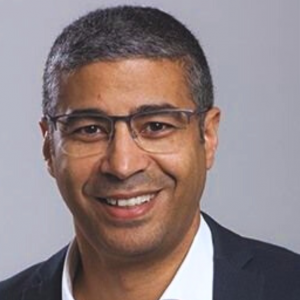Supply chains across all sectors have been affected by the recent world crises. What did this mean for your company, and what were the main issues that kept you up at night?
I've been in the supply chain for 27 years and have worked in eight different countries, but what we've gone through in the last two and a half years has been truly unique and transformative. The series of disruptions started by Covid has completely changed the role of supply chains - we used to be dictated by optimizing costs and streamlining flows, but now we have shifted from a demand driven market to a supply driven market. It has been difficult and has profoundly reshaped our strategy in several areas.
Schneider Electric has been named one of the most sustainable companies in terms of supply chain activity by the World Economic Forum. What are the most meaningful changes you've implemented to accomplish this?
I'm very pleased with this recognition; we now have five factories that are sustainability lighthouses, with more on the way. We approached this transformation with a large-scale mindset, recognizing that it would need to affect all of our entities and our entire company culture.
We actually started a transformation program six years ago, but the reality of the last few years forced us to devise a new strategy (STRIVE). To begin with, sustainability has become a "must" rather than a "nice to have." Is critical now to consider climate change, sustainability has become core business criterion; you do not design a new supply chain without incorporating this from the start. Secondly, we focused on resilience because the last few years demonstrated the importance of having a clear assessment of the risks and well-thought-out backup plans. Digital has also accelerated; having an end-to-end picture of your supply chain, from demand to suppliers of suppliers, makes a huge difference. We have made significant investments in all of these areas.
You work with a diverse and complex supply chain; how do you ensure that your collaborators are on the same page?
Indeed, we realized that while addressing our own processes and machines is important, a large portion of our CO2 footprint originates upstream. Understanding how to engage with our own suppliers was critical, so last year we made the decision to target 1000 suppliers (the most strategic ones) and collaborate with them to deliver on the commitment to reduce carbon emissions by 50%. We call it the Zero Carbon Project. We began assisting them with their pledges, developing their plans, and gradually organizing a community via a digital platform (called Neo) where they can find resources to measure their emissions and carry out their plans.
People often perceive sustainability as a cost. Is it also good for business?

I remember a time when people in our plants thought they couldn't ask for one million dollar investment for safety because it would impact the costs too much, whereas today this is not even a discussion, if it's linked to safety we make sure it gets executed. Sustainability is walking a similar path.
Looking at the evolution of energy prices and what's going on in the world today in terms of inflation, managing energy consumption has a direct impact on business. This winter, Europe may face gas shortages - the ability to monitor energy consumption may determine whether you stay in business or not. What we now consider a cost will soon be seen as a competitive advantage.
What do you hope to accomplish in the next 2-3 years?
Our top priority is to restore supply chain balance and help our customers recover from the last two years of permanent disruptions. Second, we've learned over the last two years the value of super strategic relationships with our customers, but also with our suppliers and suppliers of suppliers. This includes providing visibility into technology roadmaps and innovation plans, as well as leveraging these aspects to truly create a network. We also need to see the supply chain from beginning to end, and the only way to do so is digitally.
Personally, I would like to see supply chains become increasingly sustainable, respectful of biodiversity and the environment, and to spread this message as widely as possible.
- Share on:



